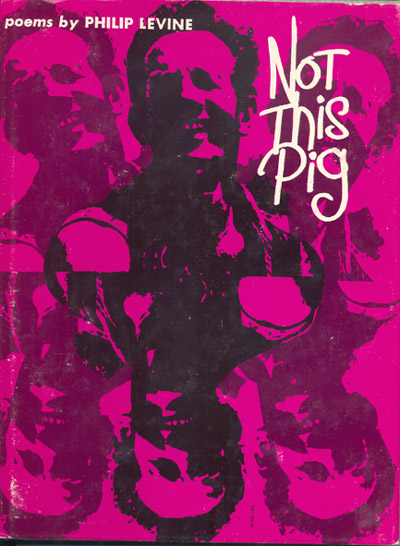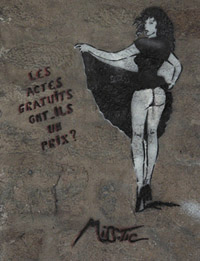
Grant Wood. Parson Weem’s’ Fable. 1939. Amon Carter Museum, Forth Worth.
When I was five years old, before I learned to read, I laid claim to a book in the family library called Pictorial History of American Presidents. It covered the course from George to Ike, who still held office then, and it was loaded with black and white reproductions of historic images and political cartoons. It’s where I first encountered this sardonic painting by Grant Wood. My attention favored the hatchet, of course. Then there was the marvel of George’s pompous head (like the picture on a dollar bill) planted atop a child’s body. What was that about?
I have the book in hand this morning, so spine-cracked and well-thumbed it falls open effortlessly to the very same page I lingered over as a proto-reader. Call it my first foray into postmodern criticism of visual rhetoric. I asked my mom what it meant, and she recited the verities. Young George Washington was playing with a hatchet he never should have touched. He got carried away and senselessly chopped down a cherry tree in the front yard. When his dad found out he got mad an ddemanded to know who’d done it. George answered forthrightly, ‘Father, I cannot tell a lie. I did.’
I knew there was more going on in the picture than my mom would explain. She avoided altogether the surrealism of a grown-up’s head grafted on a kid’s body. And who was the smug guy pulling back the curtain? She didn’t know. Years later I would learn that he was Parson Weems, first biographer of the Father of Our Country. The Parson reminded me then of James Boswell’s scathing description of Thomas Gray, poet of Elegy Written in a Country Church Yard: “He looked as if he’d befouled his small clothes, and only he knew it.” Parson Weems invented the story about George Washington chopping down the cherry tree. Call it an embellishment, a convenient truth, the fable is forever enshrined now in civil mythology. Hatchets in hand, rough-hewn but square-cut, American political leaders have been scrupulously honest ever since.
 I make maps to understand what it means to be blind, and a flaneur . Those ideas are elusive destinations. Think of them as streets you can wander along with me. Start with the first post,
I make maps to understand what it means to be blind, and a flaneur . Those ideas are elusive destinations. Think of them as streets you can wander along with me. Start with the first post, ![Fog at Isle Royale [Source: wildmengoneborneo.com] Fog at Isle Royale [Source: wildmengoneborneo.com]](../wp-content/uploads/2008/04/isle_royale_fog.jpg) "Brendan, this is what the world looks like all the time to me. Just a little fog. It’s a fine day for boating on the Great Lakes.” Without missing a stroke he turned to dart a skeptical glance at me. Brendan the Navigator. When we named him I didn’t tell his mother everything the legendary Irish name implied. But I imagined him taking on the role of navigator for me. Growing up with Coastal Survey charts and tales of Great Lakes shipwrecks, he came to know Superior as another home. He never doubted the wisdom of canoeing there with a father who was half blind.
"Brendan, this is what the world looks like all the time to me. Just a little fog. It’s a fine day for boating on the Great Lakes.” Without missing a stroke he turned to dart a skeptical glance at me. Brendan the Navigator. When we named him I didn’t tell his mother everything the legendary Irish name implied. But I imagined him taking on the role of navigator for me. Growing up with Coastal Survey charts and tales of Great Lakes shipwrecks, he came to know Superior as another home. He never doubted the wisdom of canoeing there with a father who was half blind.  If there is an emerging genetic underclass, I could run for class president or class clown. Read more in
If there is an emerging genetic underclass, I could run for class president or class clown. Read more in 
![Charlotte Casiraghi in a red dress. [Source: Stylophile] Charlotte Casiraghi in a red dress. [Source: Stylophile]](../wp-content/uploads/2008/02/charlotte_casiraghi_red_dress.jpg) When I figured out who Charlotte Casiraghi was, I realized that I once sent a poem to her mother.
When I figured out who Charlotte Casiraghi was, I realized that I once sent a poem to her mother. 
 Poet and street artist Miss Tic isn't exactly a kid in a hoodie with a can of spray paint. Maybe she can still run like hell when the police show up, but can she sprint in high heels? Well-known in international avant-garde circles, her work is exhibited now at the Venice Biennale as well as the alleys of Paris.
Poet and street artist Miss Tic isn't exactly a kid in a hoodie with a can of spray paint. Maybe she can still run like hell when the police show up, but can she sprint in high heels? Well-known in international avant-garde circles, her work is exhibited now at the Venice Biennale as well as the alleys of Paris.
0 Comments
There are no comments yet, be the first by filling in the form below.
You must log in to post a comment.